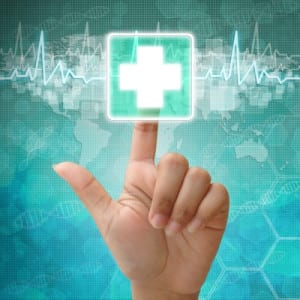The Digital Age of Healthcare

With the outbreak of Covid-19, greater attention is being paid to the way we deal with healthcare than ever before. Recent advances in healthcare have been driven, in the main, by advances in digital technologies, which make it possible to treat patients more effectively than before. This might mean novel means of diagnosing and battling illness, but it might also mean more effectively managing hospitals in order that healthcare professionals spend less time dealing with mundane administrative tasks, and more time treating patients.
Internet of Things in Medicine
Interconnected devices are especially useful when it comes to medicine. Just imagine a heartrate monitor that updates regularly to a cloud. Data of this sort might be used to monitor pre-existing conditions, and to identify new ones as they develop. Since the FitBit became mainstream, the idea of a wearable device of this sort doesn’t have a cultural barrier to overcome – and having devices like this integrate with other medical equipment might help to create an incredibly precise image of the health of a given patient.
Managing Beds
Keeping a hospital within capacity is essential if the required standard of care is to be delivered consistently. That means monitoring the progress of patients and moving them toward discharge at exactly the appropriate time, via a bed management system. This will help to secure the best possible outcome for patients and relieve the administrative workload on the hospital staff. This is an area where digital technology is already having a marked impact.
What’s next?
The future of medicine is undoubtedly exciting. We might imagine a surgeon assisted by precision-controlled robotic limbs, or a hospital staffed by mechanical nurses. But the next frontier in diagnostic innovation is undoubtedly artificial intelligence.
A single doctor might look at an image of an x-ray, compare it against a remembered catalogue of similar x-rays and symptoms, and then make a diagnosis. Most of the time, that diagnosis will be the correct one. But even a 1% rate of misdiagnosis can be disastrous if thousands of patients are being treated every year. Highly specialised programs might soon be trained to sift through not just thousands, but millions of images of this sort, and identify the suspect ones through machine learning. The failures might be examined and learned from. We should expect to see programs of this sort become mainstream soon after they begin to rival human diagnosis-makers.
